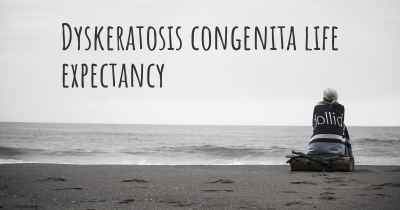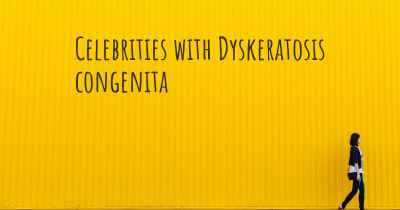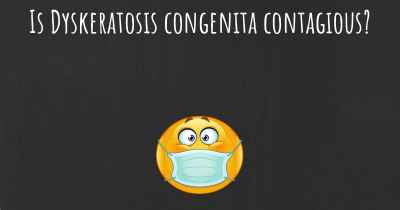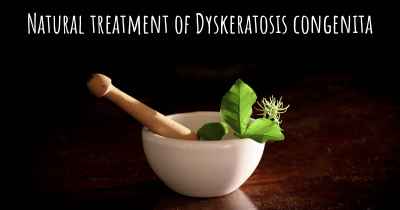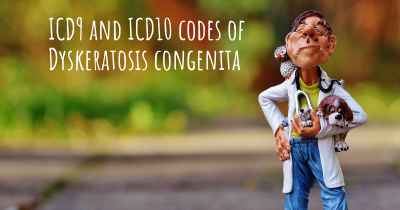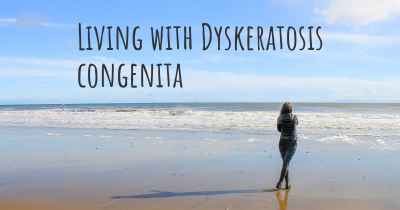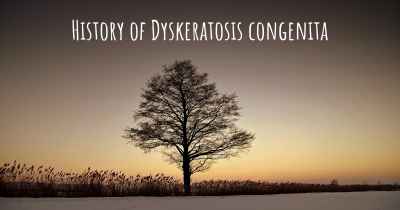Is Dyskeratosis congenita hereditary?
Here you can see if Dyskeratosis congenita can be hereditary. Do you have any genetic components? Does any member of your family have Dyskeratosis congenita or may be more predisposed to developing the condition?
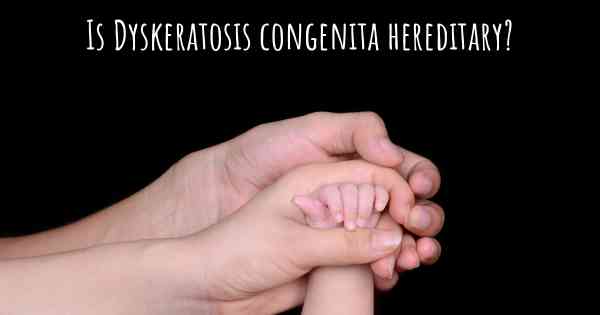
Dyskeratosis congenita is a hereditary disorder characterized by progressive bone marrow failure and a range of physical abnormalities. It is caused by mutations in certain genes that are passed down from parents to their children. The inheritance pattern of this condition is typically X-linked recessive, autosomal dominant, or autosomal recessive. Genetic testing and counseling are recommended for families with a history of dyskeratosis congenita to understand the risk of passing on the condition.
Dyskeratosis congenita (DC) is a rare genetic disorder that affects multiple body systems, primarily the skin, nails, and bone marrow. It is characterized by a triad of clinical features: abnormal skin pigmentation, nail dystrophy, and leukoplakia (white patches) in the mouth and throat. DC is primarily an inherited condition, meaning it is passed down from parents to their children through genetic mutations.
Hereditary nature of Dyskeratosis congenita:
DC is considered a hereditary disorder because it is caused by mutations in specific genes that are passed down through generations. The most common form of DC is known as X-linked recessive DC, which means the mutated gene responsible for the condition is located on the X chromosome. Since males have one X and one Y chromosome, a single mutation on the X chromosome is sufficient to cause the disorder. Females, on the other hand, have two X chromosomes, so they need mutations on both copies of the gene to develop DC. As a result, males are more frequently affected by DC than females.
There are also other forms of DC that follow different inheritance patterns, such as autosomal dominant and autosomal recessive. In autosomal dominant DC, a mutation in one copy of the gene is enough to cause the disorder, and affected individuals have a 50% chance of passing the mutation to each of their children. Autosomal recessive DC requires mutations in both copies of the gene, and individuals with one mutated copy are carriers without symptoms. If both parents are carriers, they have a 25% chance of having an affected child with DC.
Genetic mutations associated with Dyskeratosis congenita:
DC is primarily caused by mutations in genes that are involved in maintaining the length of telomeres, which are protective caps at the ends of chromosomes. Telomeres play a crucial role in preserving the stability and integrity of chromosomes during cell division. Mutations in genes such as TERC, TERT, DKC1, NOP10, NHP2, and TINF2 disrupt the normal functioning of telomeres, leading to the characteristic features of DC.
Clinical manifestations and complications:
DC can present with a wide range of symptoms and severity, even among affected individuals within the same family. In addition to the triad of skin pigmentation abnormalities, nail dystrophy, and oral leukoplakia, individuals with DC may experience bone marrow failure, which can lead to low blood cell counts and an increased risk of infections, bleeding, and anemia. Other complications may include pulmonary fibrosis (scarring of lung tissue), liver disease, gastrointestinal problems, and an increased risk of certain cancers, particularly acute myeloid leukemia.
Diagnosis and management:
Diagnosing DC involves a combination of clinical evaluation, family history assessment, and genetic testing. Skin and nail biopsies, as well as bone marrow examinations, may be performed to confirm the diagnosis and assess the severity of the condition. Genetic testing can identify specific mutations associated with DC.
Currently, there is no cure for DC, and treatment focuses on managing the symptoms and complications. Regular monitoring of blood counts, bone marrow function, and organ health is essential. Supportive care measures, such as blood transfusions, growth factors, and antibiotics, may be necessary to manage complications. Hematopoietic stem cell transplantation (HSCT) can be considered as a potential curative treatment for individuals with severe bone marrow failure or malignancies.
Conclusion:
Dyskeratosis congenita is a hereditary disorder caused by mutations in specific genes involved in telomere maintenance. It is primarily passed down from parents to their children through various inheritance patterns. The condition presents with a range of symptoms and can lead to severe complications. Early diagnosis, regular monitoring, and appropriate management are crucial in improving the quality of life for individuals with DC.
